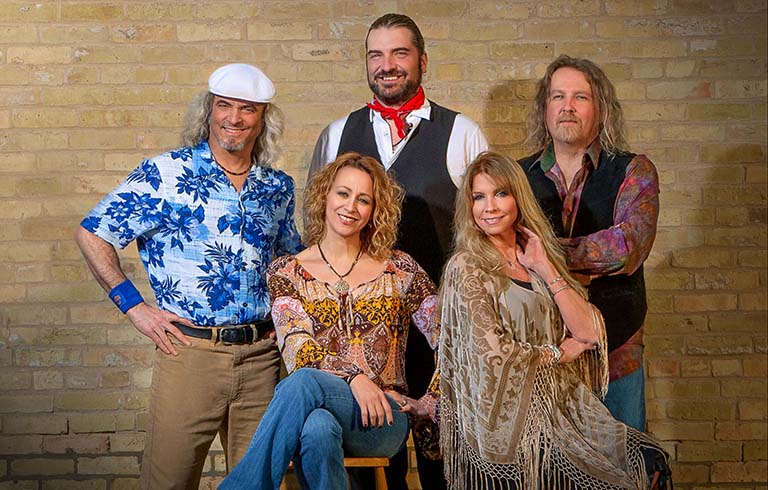
Tusk: Fleetwood Mac tribute coming to Trine Nov. 17
Tusk, the Ultimate Fleetwood Mac Tribute, will bring the band’s greatest hits to the stage of Trine University’s T. Furth Center for Performing Arts on Friday, Nov. 17.
October 29, 2021
ORLANDO, Fla. — Four Trine University biomedical engineering students attended the annual meeting of the Biomedical Engineering Society (BMES) from Oct. 6-9 at the Orlando World Center Marriott in Florida, with three presenting research.
Offered in person and online, the annual meeting serves the society’s more than 5,000 members. The theme for this year’s event was “Magical Healthcare Innovation Powered by an Inclusive Workforce.”
The Trine students attended in person. Ashley Spirrison of Fishers, Indiana, and Madison Howard of Pleasant Lake, Michigan, presented research from a project they are conducting at Trine under the supervision of Max Gong, Ph.D.
Howard and Spirrison are developing microfluidic vasculature-on-a-chip models, engineered models that mimic living tissues, of blood and lymphatic vessels to investigate the relationship between hyperoxia (excess oxygen in tissues and organs) and its negative health effects.
The project seeks to help address concerns NASA has regarding the safety of its astronauts, who have to be exposed to hyperoxia while completing missions outside of Earth’s atmosphere.
“We had a great response with many professors, undergraduate, graduate and post-doctorate students stopping by to listen to our presentation and ask questions,” said Spirrison.
Paige Schiebel of Saint Charles, Minnesota, presented research she conducted as part of the National Science Foundation Research Experience for Undergraduates (REU) program at the University of South Carolina this past summer. She also was able to reconnect with faculty and other students who were part of the REU.
Schiebel’s research focused on the effectiveness of using specialized gold nanoparticles to reduce plaques in the brain that cause Alzheimer’s disease.
“My research sparked the interest of several graduate students and faculty of diverse backgrounds who stopped by to hear about it,” she said. “I enjoyed sharing my research and receiving feedback about ideas they had to build upon and improve my work.”
Kortney Helm of Muncie, Indiana, attended as a student volunteer.
“I thought it would be a great experience to learn more about what novel advancements and research are going on in the rapidly evolving field of biomedical engineering,” she said. “I also thought it would be a great professional development experience.”
Helm said she enjoyed listening to a variety of presentations and networking with students from other universities and graduate programs as well as biomedical engineering companies.
“One thing I did not expect, but was delighted to experience, was a greater appreciation for my education at Trine,” she said. “Talking with and learning from leaders in the biomedical engineering field who have far more experience than we do as students seemed very intimidating at first, but I was able to have enjoyable, intelligent conversations with numerous professionals because of the technical knowledge and soft skills the BME department at Trine has equipped me with.”
She said the conference also reinforced the relevance of what she is learning in the classroom.
“I saw presentations where even the leaders in the field of BME were relying on the very same knowledge base and techniques I have learned in my classes at Trine,” she said.
In addition to attending the conference, the group was able to take some fun excursions to Disney Springs, Epcot and ICON Park, and were part of a networking event with fellow BMES attendees at Universal Studios Island of Adventure.
“I had a lot of fun at the conference and really enjoyed hearing about all of the cutting-edge research taking place in our field,” said Howard.